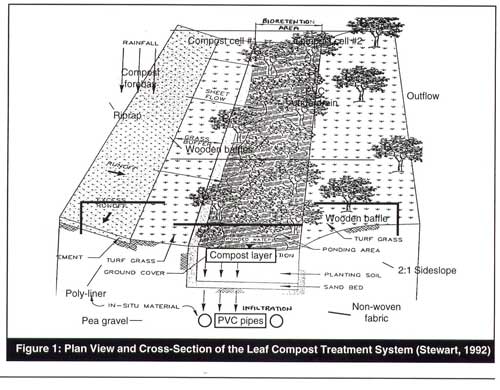

| Construction & siting issues | ||
|
||
|
||
 |
||
| Critical Factors: | ||
| The key to good performance is proper selection of compost. Here are some ideal characteristics. Note that for the Sand Point Wetlands project, the surrounding neighborhoods could supply a good quantity of fallen leaves for compost. | ||
|
||
 |
||
 |
||
| Drawbacks/Need for Improvement: | ||
| Total dissolved solids, however, increase
after passing through a leaf compost filter, which appears to reflect
the exchange and/or leaching of cations (positively charged ions of
calcium, nitrogen, or ammonia) within the composts. While these particulate
nutrients are trapped within the compost, the system exports soluble
phosphorous and nitrates. Subsequent monitoring in 1992 has confirmed that these removal rates can be equaled or exceeded. |
||
| Window of Opportunity for Best Function: | ||
| In general, this system was most effective during the first flush of runoff and smaller storms, with removal rates declining as storm size increased. Better removal rates can probably be attained by increasing either the surface area or storage volume of the compost system. | ||
| Maintenance: | ||
| The compost system requires annual
or biennial removal and disposal of the compost layer, followed by
replacement of fresh compost. It can cost up to 1,000 dollars. Tests
indicate that the compost can be safely land filled. |
||
| Maintenance Problems: | ||
| The key problem has been sediment
deposition over the surface of the compost that reduces the permeability
rate. Perhaps the use of larger fore bays, lower design permeability
rates, or regular raking/discing of the filter bed surface could relieve
the problem. W&H Pacific are refining the design. |